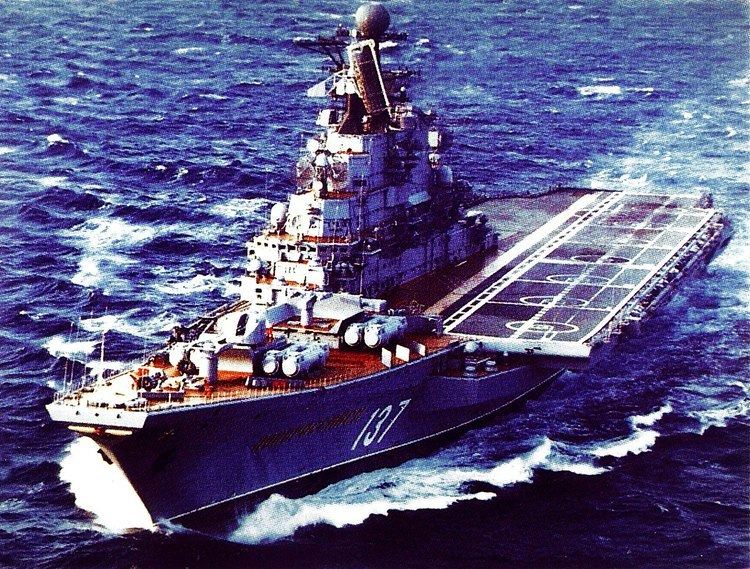Preceded by Moskva class | Subclasses Baku class | |
 | ||
Builders Chernomorsky Shipyard 444 In service 28 December 1975–199515 December 2013 – present | ||
The Kiev-class aircraft carriers (also known as Project 1143 or as the Krechyet (Gyrfalcon) class) were the first class of fixed-wing aircraft carriers built in the Soviet Union.
First laid down in 1970, the Kiev class was partially based on a design for a full-deck carrier proposed in Project Orel. Originally the Soviet Navy wanted a supercarrier similar to the American Kitty Hawk-class. However, the smaller Kiev-class design was chosen because it was considered to be more cost effective.
Unlike American or British carriers, the Kiev class is a combination of a cruiser and a carrier. In the Soviet Navy, this class of ships was specifically designated as a "heavy aviation cruiser" (Russian: Тяжелые авианесущие крейсера) rather than an aircraft carrier. This designation allowed the ships to transit the Turkish Straits, while the Montreux Convention prohibited aircraft carriers heavier than 15,000 tons from passing through the Straits.
The ships were designed with a large island superstructure to starboard, with an angled flight deck 2/3rds of the length of the total deck, and the foredeck was taken up with heavy surface-to-air and surface-to-surface missile armament. The intended mission of the Kiev class was support for strategic missile submarines, other surface ships and naval aviation; it was capable of engaging in anti-aircraft, anti-submarine, and surface warfare.
A total of four Kiev-class carriers were built and commissioned, serving in the Soviet and then Russian Navy. The first two ships were sold to China as museums, and the third ship was scrapped. The fourth ship, Admiral Gorshkov, was sold to the Indian Navy in 2004, and after years of extensive modifications and refurbishment, is currently in active service as INS Vikramaditya.
